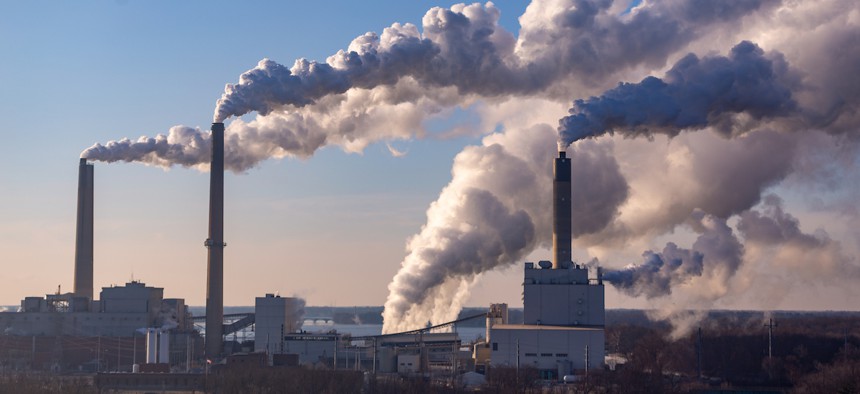Safely Routing Carbon-Capture Pipelines

DWalker44/Getty Images
The National Energy Technology Laboratory is developing data tools for state and local agencies making pipeline routing decisions for carbon capture and storage projects.
One of the ways the Biden administration proposes to help the country reach the goal of achieving net-zero greenhouse gas emissions by 2050 is through carbon sequestration. Carbon dioxide would be captured from ethanol plants and other sources and transferred via thousands of miles of pipelines to permanent underground storage sites and conversion facilities.
To help inform CO2 pipeline routing decisions, a new resource offers officials nationwide data on infrastructure, land-use policies and environmental conditions that could influence the construction and location of the pipelines. U.S. officials hope to transport 65 million metric tons of carbon per year by 2030, officials at the Energy Department’s National Energy Technology Laboratory, or NETL, said in a statement launching the resource.
“Routing of pipelines, trains, and other infrastructure to facilitate CO2 transport depends on being able to evaluate a variety of regulatory, topographic, and potential risk variables,” said Jennifer Bauer, a data scientist at NETL and principal investigator of the Carbon Capture and Storage Pipeline Route Planning Database. “These complex systems require considerable investments and time to plan and complete; making it paramount that the best set of available information is utilized when planning and developing these systems.”
With more than 90 GB of spatial data, including variables such as land-use restrictions, soil type, slope of the terrain and the location of current infrastructure such as transportation and energy utilities, the database can help officials efficiently determine optimal routes for pipeline placement, Bauer said.
The database also includes satellite imagery from sources such as NASA, the U.S. Geological Survey and the National Oceanic and Atmospheric Administration, she said, and it identifies disadvantaged communities and areas vulnerable to natural disasters so planners can reduce environmental injustice. The database will be updated monthly.
“The more we can do upfront to make sure that we're really being responsible and considerate when planning these routes … considering the technical needs, the optimal costs and time reduction needs as well as the social and environmental responsibility … is more likely to lead to long-term success,” Bauer said.
The database also serves as a building block for NETL’s smart route planning tool, which will leverage machine learning to produce route options for data users, she said. Slated for a March 2024 release, the tool will “serve as a decision support tool and offer those people that are coming to the table and discussing options a better understanding of how their preferences and their priorities can affect the route options overall.”
“Having access to these types of data … and tools that can be used more at the start of a project to help facilitate those conversations should ultimately help us more rapidly provide the infrastructure, and therefore the transportation, that’s necessary to meet the nation’s goals,” Bauer said.






